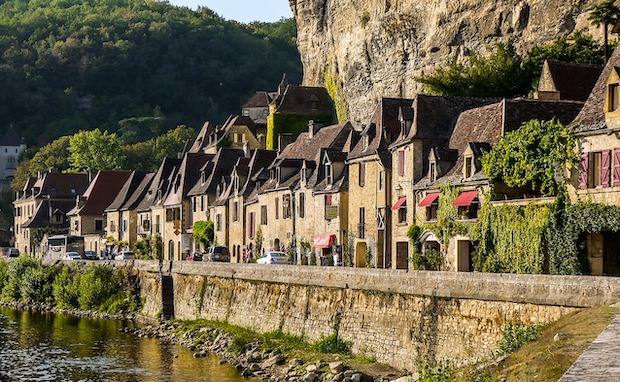Southern France’s Dordogne valley is the heart of walnut country, where the humble noix (nut) has been part of the landscape since the 10th century, when peasants would pay their debts with bushels of nuts. A weekend break in this picturesque valley will worth it, and good time to go is in early autumn when the temperature is moderate twenties and best of all, there are less tourist, so you are free to wonder unhindered. Just next door to the Dorgogne, is the Lot department which boast the same golden stone villages and breathtaking views. Following the river, you can start in Bergerac and drive to the Lot department, the drive offers views of walnut groves, nestle under golden cliffs, distilleries, mills and markets which form the Route de Noix.

Your weekend starts in Souillac with its Friday morning market. Its medieval streets are pack with locals and vendors, shaking hands and exchanging cheeky bonjours cross the stalls. Among the typical Périgord fare of pink garlic, Agen prunes and gnarled saucissons, plastic crates and wicker baskets are piled high with freshly harvested walnuts oil stand next to enticing, caramel-coloured gateaux aux noix (nut cake).
It is worth visiting Distillerie Louis Roque, a small producer of aperitifs and liqueurs, many of which use walnut as their key ingredient. You can get a tour around this small horse-drawn distillery – a cart with stills on top – which dates back to the 19th century, when it was used to tour the various orchards and groves, distilling fruit and nuts along the way.
A heady aroma pervades a dark cellar in which dozens of neatly arranged barrels contain a variety of drinks. The most famous is La vieille prune, a plum liqueur that is much tastier than its name – “the old prune”
There is an onsite museum, where antique copper stills and assorted ancient tools tell the story of these historic drinks – where they still label bottle by hand. I had a sample of the rich vieille prune and the distillery’s walnut liqueur, la vielle noix, into two tiny plastic beakers. The walnut liqueur, with its caramel and liquorice flavours, is like nothing I’ve experienced before.
From Souillac it’s short drive to Martel. The medieval town centre is a jumble of terracotta roofs and narrow streets huddled around the marketplace. Here you can walk around browsing its lovely gift shops, there is museum and a church. Try the town’s walnut tarts and loaf cakes. Explore the area as you travel its winding roads, through walnut groves and truffle orchards. Visit the Quercy Natural Regional Park and its villages.
The Moulin a Huile de Noix, is another spot worth stopping for something to eat and take a tour of the mill. There has been a walnut mill at this spot for hundreds of years. In the dark cellar, a huge stone crushes walnut by the sackful as it trundles around its granite base. Operated by a monsiesur Castagne, said he is the third-generation operator, as his father and grandfather before home where operators. As the nuts are crushed you can see small trickle of oil flowing from the apparatus into the collecting container.
Carennac is work a stop and browse, with its small medieval cloisters attached to the 11th-century church of St Pierre. At this time of year is very quiet here, so you have the place to yourself. The Dordogne Bridge out of Carennac offers the opportunity to take beautiful photos with the village and its medieval and turrets and towers in the background.
Next and final stop is the pilgrimage site of Rocamadour. The village clings to a cliff above the River Alzou, giving you a complete with of the whole Alzou canyon below. This area has been the admiration of the world. It been around since the Middle ages, and was pilgrim site in the 12th century, when worshipers would travel from across the whole of Europe to visit this site worship and pray.
Area has just one main road the Rue de la Couronnerie, a lively street with boutiques and restaurants. To get to the square are 233 step which you have to climb, here you find a cluster of 8 churches and chapels beneath the cliff. A must see is Notre-Dame Capel (Lady Chapel), which house the Black Madonna – she was carved from the wood of a walnut tree in the 12th century. Also, there is the Chateau, which stands over the whole village, which you can visit. It gives you a stunning view over the village and lovely way to end you trip to this beautiful and sacred destination.